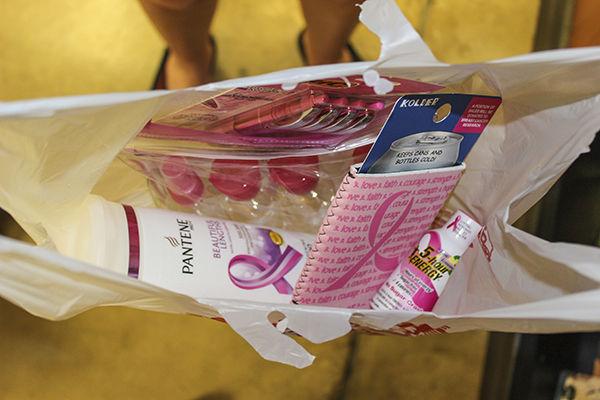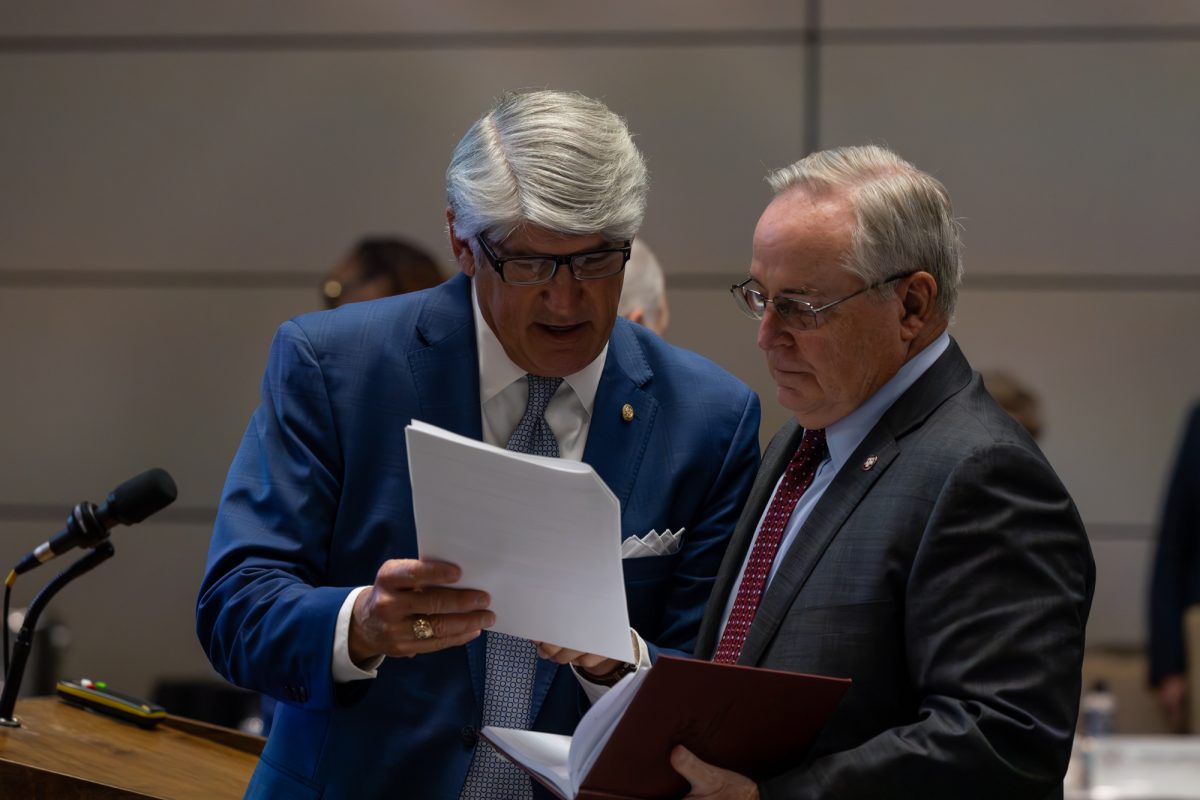October is Breast Cancer Awareness month, and many places and products are already decked out with pink ribbons. While breast cancer affects thousands of families, awareness and research campaigns have been the source of some controversy.
Tasha Dubriwny, associate communication and women and gender studies professor, has researched the pros and cons of breast cancer campaigns. While her research has a strong focus on the role of gender, she has gained insight into the other sections of the complex campaigns.
One concern Dubriwny has involves consumer competence and whether people who buy pink products are actually aware of where their money goes.
“Part of what I find fascinating about breast cancer campaigns is that people have no sense of where their money is going, generally, nor do they have any sense of the dozens of research groups that are out there doing breast cancer research,” Dubriwny said. “Whether you’re sending your money by buying a product to the Breast Cancer Research Fund, or you’re supporting research through Breast Cancer Action, there are all these different ways to get to it and they’re going to be doing different types of research.”
Regarding awareness campaigns versus research campaigns, Damion Waymer, communication professor, said the goal of any campaign is dependent on the objectives.
“It depends on how the organization sets its goal,” Waymer said. “Komen is large enough where it has a big enough following that it can generate large sums of money to help fund the breast cancer research. A smaller health clinic, let’s say in rural Texas … Komen is not likely to reach that population, but there might be a local clinic there that says, ‘Okay, there is a large percentage of women being diagnosed with breast cancer. What can we do right here to get early diagnosis?’ That local clinic is not going to be interested in generating dollars for research. It’s going to be, ‘How do we serve the community and population that’s immediate to us?’ So the campaign goals will be different.”
Patricia Gerling, president of the Pink Alliance, a local non-profit advocacy group for the Brazos Valley, said focusing on a local scale keeps advocacy within the community. She said there is a need for research funding, but financially challenged women, who may be medically uninsured, need assistance as well.
“We live locally, we work locally, we donate locally and we want to ensure that all of the funds that we garner in support of breast cancer support stay here locally to help women here in our community rather than those funds leaving our community,” Gerling said.
Most campaigns focus more on raising breast cancer awareness than on research. Dubriwny said she believes breast cancer campaigns are well-intentioned and want to make a positive difference, but some corporate campaigns require more than a simple purchase.
“If you have the choice between a yogurt that is not pink or a yogurt that is pink, then maybe you buy the pink yogurt just to help out,” Dubriwny said. “But as I talked about, most of these products have additional steps that you have to take in order to make sure your money goes anywhere.”
Although not all campaigns use this tactic, Dubriwny said it is still a major concern, especially when businesses are not held accountable for upholding their end of the deal.
“The fine print of these documents, I’ve emphasized, is so important because most of them have maximum donations that are often absurdly low,” Dubriwny said.
However, Dubriwny said she has monitored more pushback by members of the public who are looking more critically at breast cancer campaigns.
“I think if you did a quick Google search, you would find more and more people questioning the popularity of pink products and pushing back at marketers and companies who seem to be using these products as a way to designate their women-friendly status rather than a means to designate any real interest in solving the problem that is breast cancer,” Dubriwny said.
Dubriwny said when companies take advantage of breast cancer awareness month to appear women-friendly, they distract from the central focus of the campaigns — the patients.
“I don’t like the connection between the NFL and breast cancer, let’s just put that out there,” Dubriwny said. “That’s a connection that has long made me uncomfortable. I think the marketability of breast cancer has made it easy for numerous companies to attach themselves to it. But the more we see pink ribbons, scandals associated with these companies, I think we lose sight potentially of what it is that we’re supposed to be focusing on.”
Casey Doyle, assistant director of marketing for the athletics department, said at A&M the fundraising is not to profit athletics.
“When we do these cause nights, whether it’s breast cancer or whatever it might be, it normally has touched a program in some way, whether it be through a player or a coach,” Doyle said. “We’re not doing these things just to do them. There’s normally a significant reason behind it because we do want to make a difference. I feel like sometimes people think the breast cancer fundraising in sports gets a little overdone. A lot of times it is something that has actually touched a program.”
For people who are proactive about understanding where their money is going, Dubriwny said she encourages people to visit BCaction.org.
“That’s the website that I think is the most critical of breast cancer marketing,” Dubriwny said. “It’s a group that’s run out of [California]. They fundraise and raise awareness, but one of their policies that I really admire is that they refuse to accept donations from big pharma, which enables them to critique pharmaceutical companies and medical research in a way that other groups are not going to be able to do.”
While she does have concerns, Dubriwny said raising breast cancer awareness is important because so many people are affected by the disease.
“Everybody knows somebody who has been influenced or affected by breast cancer,” Dubriwny said. “It may not be the world’s number one killer, but it’s nevertheless ubiquitous enough that it is everywhere, which makes this important to think about how we’re framing it for the public.”
The problem with pink ribbons
October 5, 2014

Photo by Allison Bradshaw
While some comapnies provide sizeable donations, many brands appear to promote and donate to breast cancer awareness and research.
0
Donate to The Battalion
$2065
$5000
Contributed
Our Goal
Your donation will support the student journalists of Texas A&M University - College Station. Your contribution will allow us to purchase equipment and cover our annual website hosting costs, in addition to paying freelance staffers for their work, travel costs for coverage and more!
More to Discover









